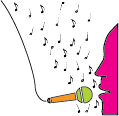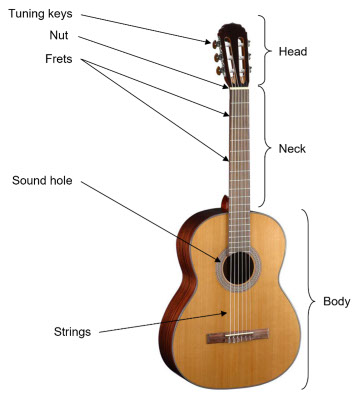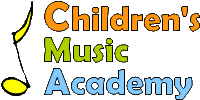
Children's Music Academy

How to select a Guitar for a child?
If you’re looking to purchase a guitar for a child, then simply asked your guitar teacher. An experienced guitar teacher that teaches mostly children will have the experience to recommend the right guitar for your 5 to 12 year old child. Lets start with the basic knowledge you need to know to better understand how to communicate with the staff at your local music shop.
Don’t forget to shop around and compare prices before making a purchase or hiring an instrument. There are often deals available on guitars for beginners that include the guitar plus a case and digital tuner, so don't be afraid to explore all of your options.
Why do I need an guitar at home?
Put simple, you can't learn to play the guitar unless you have one to practice on. Having a guitar at home allows you to practice whenever you want and can help you develop discipline and consistency in your practice routine.
What are the different parts of a guitar called?
Learning the names and functions of the different parts of a guitar is essential when selecting a guitar for a beginner guitarist.

Here are the names and descriptions of the common parts of a guitar:
- Head: The top part of the guitar where the tuning pegs are located. It holds the strings in place and allows for tuning adjustments.
- Neck: The long, thin part of the guitar that extends from the body. It holds the frets and fingerboard, and is where the player presses down on the strings to create different notes.
- Frets: The metal wires that run perpendicular to the neck of the guitar. They are spaced out to create different notes when the strings are pressed down against them.
- Fingerboard: The flat surface on the neck of the guitar where the frets are located. It is usually made of wood and allows the player to press down on the strings to create different notes.
- Body: The main part of the guitar that holds all the other parts together. It can be made of different types of wood and can have different shapes and sizes depending on the type of guitar.
- Bridge: The part of the guitar that holds the strings in place on the body. It is usually located on the lower part of the body and can be made of different materials.
- Strings: The thin metal wires that run from the headstock to the bridge of the guitar. They are usually made of steel or nylon and can be tuned to different pitches to create different notes.
An electric guitar has a few extra parts;
- Pickups: The electronic components that convert the vibrations of the strings into an electrical signal that can be amplified. They are usually located on the body of the guitar and can be single-coil or humbucker pickups.
- Volume and Tone Controls: The knobs on the body of the guitar that allow the player to adjust the volume and tone of the sound produced by the pickups.
- Output Jack: The part of the guitar where the cable is plugged in to connect the guitar to an amplifier or other sound system.
The different types of guitars suitable for children?
There are three common types of guitars suitable for children
- Classic Guitar
- Acoustic Guitar
- Electric Guitar
For beginners and young children nylon strings are easy on the fingers and makes playing easier, while steel strings are harder on the fingers but have a lovely sound. These guitars all have six strings. Classic and Acoustic Guitar look similar but have different strings, with classic guitar using nylon strings and acoustic guitar using steel strings. Electric guitars use electronics to amplify the guitars sound and play it through an attached speaker or headphones. It’s also possible to get an acoustic guitar that doubles as an electric guitar. A great option for a beginner is the Ukulele. To select the most appropriate guitar for your child talk to your guitar teacher.
Which guitar size should I buy for my child?
The size of a guitar needs to be matched to the age and height of the child. Most guitar manufacturer offer four common guitar sizes called quarter size, half size, three quarter size and full size. A child’s age and height can be roughly matched to the four guitar size as shown below,
- Quarter size guitar is suited to a 4-6 year old about 110 cm tall
- Half size guitar is suited to a 5-8 year old about 130 cm tall
- Three quarter size guitar is suited to a 8-11 year old about 142 cm tall
- Full size guitar is suited to a child aged 12 or older and is 160 cm or taller.
The details above are a reference. A parent should check with their guitar teacher to assist them in selecting a guitar size that is appropriate for the child.
If a child is close to the next guitar size, then get the guitar that is a bit larger. A guitar that is a few cm to large will not cause any problem and will give a longer playing life to the guitar as the child grows.
What about kids outgrow their guitar?
There is no need for a parent to buy a larger guitar as soon as a child outgrows their old one. While a guitar that is to large for a child can hinder their progress, a guitar that is bit to small is not an issue provided the child is comfortable playing it. Consider a ukulele, its small but adults can play them without difficulty. Keep in mind that a 12-year-old would not want to play quarter size guitar. Be guided by the experience of your guitar teacher when it may be appropriate to switch to a new larger guitar.
What are some good guitar brands in Australia?
Common Guitar brands purchased for children include Valencia, Ashton and Yamaha. Expect to pay about $120 to $200 in Australia. Yamaha is good quality brand with a broad range of guitar models, but is more expensive than a Valencia or Ashton guitar. Valencia and Ashton produce good entry level student guitars, often bundled with a case and digital tuner.
What’s best? Buying a new or second-hand guitar, or hiring a guitar?
The best decision will depend on the child's level of interest and commitment. If the child is very interested in learning to play the guitar, then it may be worth investing in a new or higher-quality instrument. A new instrument often come with a case and will have a warranty covering an defects. However, if the child is only interested in playing for fun, then a second-hand or lower-quality instrument may be more appropriate. Second hand guitars can be found online and in some music stores. Be sure to inspect the instrument before purchasing, as there can be hidden damage such as cracks, bent neck or broken strings. Hiring a guitar is also an option, which can be cheaper than buying one outright and may be more flexible if the child's interests change over time.

We offer music lessons for children learning piano, guitar and singing in the hills district of Sydney at our two teaching venues in Glenwood and Baulkham Hills. Our music teachers are highly skilled music educators that specialise in teaching children how to learn an instrument. We are conveniently located for families living in Baulkham Hills, Glenwood, Castle Hill, Winston Hills, Rouse Hill, The Ponds, Kellyville, Beaumont Hills, Bella Vista, Blacktown, Carlingford and North West Sydney.
Main Website: www.ChildrensMusicAcademy.biz Phone: 0418 127 017 e-mail: info@ChildrensMusicAcademy.biz Last update: June 2022
© 2008-2022 Children's Music Academy Copyright Notice, Privacy Statement and Disclaimer statement.